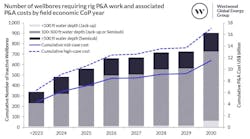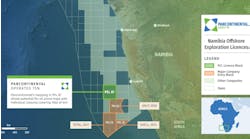Offshore staff
LONDON – Statoil plans to step up exploration drilling this year, and may be the only major offshore operator to do so, according to Tim Dodson, the company’s executive vice president for Exploration.
Dodson was speaking at the recent IP Week 2017, organized by the Energy Institute.
Statoil started the year with a program of 30 exploratory wells globally, he said, and two of these on the Norwegian continental shelf have already brought discoveries.
One isCape Vulture, potentially a subsea tieback to the Norne FPSO in the Norwegian Sea, and the other is Valemon West in the North Sea, which can be set straight into production through the Valemon platform.
However, the company is most excited about its line-up of five to seven wells in theNorwegian Barents Sea. Here the sea states are more benign than farther south, and the prospects are in shallow water with shallow reservoirs, Dodson said, “so these will be some of our least costly wells this year.”
One structure in particular has the potential to be a giant 10 Bbbl although Dodson claimed he would settle for 500 MMbbl-1 Bbbl of light oil.
In the UK offshore, the company expects to participate in three wells, two of which could open a new play, hopefully proving up significant resources.
On the agenda elsewhere are two potentially high-impact wells in Indonesia and Suriname, Dodson said. “In certain basins we have gone back, looked again at all the data and will test concepts that we have not been tried before.”
Last year Statoil also accessed 25,000 km (15,534 mi) of new acreage, which the company needs, he explained, to support a high-quality portfolio and to identify new opportunities.
Some was frontier acreage: this carries an increased subsurface risk, but getting on the curve early can prove to be transformational, he pointed out. This has been the case with Statoil’s drilling track record in the Barents Sea and offshore Newfoundland and Tanzania.
Last year the industry drilled a total of 400 exploratory wells, he continued, which was around one-third of the number drilled in 2013. “Big and small companies have reduced their activity,” he said, adding that “across the board, less capital is available for what is considered a risky venture.”
One of the results is stagnation: “It’s now 10 years since the presalt play opened up offshore Brazil,” Dodson said. “Along the Atlantic Margin there have been individual successes and others offSenegal and Guyana, but nothing to suggest the opening of a highly prolific new province.
“This is the big challenge – not so much to make individual discoveries but to find a new province with material potential like the North Sea, Brazil, and Gulf of Mexico. And it’s a bigger challenge for the larger companies that are looking to establish a material position with related synergies.”
Statoil has managed to bring down the costs of its exploratory wells, mainly through efficiency gains or simplification/standardization measures, Dodson concluded. As a result, the company expects to drill more wells this year for lower capex than in 2013, when it spent $3.5 billion on exploration.
03/20/2017


